2023
241st American Astronomical Society Meeting
NRAO Town Hall: American Astronomical Society winter meeting
 |
Tuesday, 10 January 2023, 6:30-8:30 pm PST
|
|---|
This NRAO Town Hall will inform the AAS membership about the status of science, science operations, and development programs at the National Radio Astronomy Observatory (NRAO). Three presentations will update the membership regarding:
- scientific opportunities and technical development at the Atacama Large Millimeter/submillimeter Array (ALMA), the Karl G. Jansky Very Large Array (VLA), and the Very Long Baseline Array (VLBA);
- recent science results from across the community and the Observatory; and
- scientific and technical planning for future radio astronomy research facilities, including a next generation Very Large Array (ngVLA).
The NRAO Town Hall will include time for discussion and answering audience questions.
Speakers: Tony Beasley (NRAO Director), Amy Kimball (VLA Sky Survey), Eric Murphy (ngVLA)
Special Session: ALMA Status and Plans for Increased Capability
 |
American Astronomical Society winter meeting
|
|---|
Beginning early science operations over a decade ago in 2011, the Atacama Large Millimeter/submillimeter Array (ALMA) is now in the midst of Cycle 9 observations. Over the past ten years, ALMA has provided unprecedented sensitivity, image fidelity, and resolution at millimeter and submillimeter wavelengths, supporting the research interests of more than 10,000 PIs and co-Is. From solar system objects to the earliest galaxies, ALMA observations have produced breathtaking images and opened new discovery space. ALMA data have been published in over 2900 refereed publications.
This AAS 241 Special Session will describe for the membership ALMA news, capabilities, and expectations for ALMA performance and science in the next few years and plans for its upgrade in the 2030 timeframe. In that period, ALMA will complete its frequency coverage of the millimeter window. ALMA's bandwidth will be increased to enhance continuum sensitivity even as its line sensitivity is increased via receiver upgrades, an upgraded correlator and upgrades of the systems connecting them. Higher resolution imaging is being explored, both on the exceptional site and as part of the extremely long baseline imaging arrays.
The session also features a set of science talks presenting a wide range of recent, exciting ALMA results and highlights the support available to the community from the North American ALMA Science Center (NAASC) at the National Radio Astronomy Observatory (NRAO).
| Speaker | Institution | Presentation |
|---|---|---|
| Sean Dougherty | Joint ALMA Observatory | Preparing ALMA for the Next Decade |
| Crystal Brogan | NRAO | The ALMA2030 Wideband Sensitivity Upgrade |
| Alexandra Pope | University of Massachusetts, Amherst | Decoding the cosmic evolution of galaxies through their multi-phase interstellar medium with ALMA, JWST, and the Large Millimeter Telescope |
| Eric Koch | Center for Astrophysics | The Cold Gas in Nearby Galaxies: Recent Progress and ALMA's Future Prospects |
| Jane Huang | University of Michigan | Unveiling the Birth Sites of Planets: Recent Results and Future Prospects with ALMA |
ngVLA Special Session: Chemical Probes of Astrophysical Systems
 |
American Astronomical Society winter meeting
|
|---|
Astrochemistry has become a critical investigative tool for a large range of astrophysical studies, spanning Solar System objects to the most distant galaxies. The investigation of extrasolar planetary systems is one of the defining pursuits of contemporary astronomy, using complex chemical tracers to identify the conditions that ultimately lead to habitability. Extraterrestrial amino acids, the chemical building blocks of the biopolymers that comprise life on Earth, are present in meteoritic samples and in comets, but our understanding of the chemical and physical pathways to the formation of (pre)biotic molecules remains incomplete. On galaxy scales, the presence of various molecules and associated isotopes indicate the role of energetic processes (e.g., shock, UV, and cosmic-ray heating) affecting interstellar medium conditions and pathways to the formation of the next generation of stars. While existing facilities are making transformative discoveries by pushing their capabilities to the limit of what can be detected, sample sizes remain small as detections of individual systems are limited to the nearest luminous sources. Informed by these pioneering efforts, next-generation ground- and space-based facilities will deliver large, multi-wavelength surveys that will produce spectroscopic information across the entire electromagnetic spectrum. These data will deliver a much-improved theoretical understanding of the fundamental physics driving the formation of habitable planetary systems as well as the formation and evolution of galaxies over cosmic time.
This Special Session:
- Highlighted recent scientific breakthroughs in astrochemistry enabled by current investigations using large optical/IR, (sub-)millimeter, and radio facilities;
- Described planned near- and long-term improvements for ground- and space-based facilities;
- Discussed major scientific leaps likely to result from next-generation facilities across the electromagnetic spectrum; and
- Reviewed the highest-priority themes in the field of astrochemistry that will be accomplished by the state-of-the-art observatories that will be commissioned in the next decade.
This Special Session featured invited oral presentations and contributed iPoster presentations. The program appears below. Its presentations can be accessed by clicking on their titles.
| Session ID | Presenter | Title |
|---|---|---|
| 314.01 | Brett McGuire | From Astrochemistry to Astrobiology: Next-Generation Radio Telescopes Enabling Next-Generation Molecular Discovery (coming soon) |
| 314.02 | Kamber Schwarz | Mapping Protoplanetary Disk Properties with Molecular Observations (coming soon) |
| 314.03 | Dominique Segura-Cox | The Chemical Path from Envelope to Planet (coming soon) |
| 314.04 | Stefanie Milam | The Complex Chemistry of Comets (coming soon) |
| 314.05 | David Meier | Deciphering Galaxy Energetics Through Chemistry (coming soon) |
| 314.06 | Tiffany Kataria | New Insights into the Chemistry of Exoplanet Atmospheres (coming soon) |
| 357.01 | Eric Murphy | The Next-Generation Very Large Array: A Scientific Overview |
| 357.02 | Anthony Beasley | The ngVLA: A Technical Overview |
| 357.03 | Dana Dunbar | ngVLA 18m Antenna Design |
| 357.04 | Viviana Rosero | The ngVLA Array Configuration |
| 357.05 | TK Sridharan | Calibration of the ngVLA |
| 357.06 | Anthony Remijan | The ngVLA Concept for Science and Data Center Operations |
| 357.07 | Joan Wrobel | An Envelope Observing Program for the ngVLA |
| 357.08 | David Wilner | ngVLA Key Science Goal 1: Unveiling the Formation of Solar System Analogues on Terrestrial Scales |
| 357.09 | Jennifer Bergner | ngVLA Key Science Goal 2: Astrochemistry and the Molecular Emergence of Life |
| 357.10 | Fabian Walter | ngVLA Key Science Goal 3: Charting the Assembly, Structure, and Evolution of Galaxies |
| 357.11 | Megan DeCesar | ngVLA Key Science Goal 4: Pulsars and Fundamental Physics with the Next-Generation Very Large Array |
| 357.12 | Alessandra Corsi | ngVLA Key Science Goal 5: Stellar and Supermassive Black Holes in the Era of Multi-Messenger Astronomy |
| 472.03 | Joan Wrobel | ngVLA related: Toward Astrometric Constraints on a Supermassive Black Hole Binary in the Early-Type Galaxy NGC4472 |
Splinter Session: The NRAO Science Ready Data Products Initiative and Using the VLA Sky Survey (Hybrid Event)
 |
Monday, 9 January 2023, 1:00-3:00 pm PST
|
|---|
The NRAO Science Ready Data Products (SRDP) initiative aims to simplify and streamline the way users interact with radio interferometer data products. As part of this effort, we provide several services to users providing them with easier access to calibrated visibility data and reimaging/reprocessing services. At the same time, the VLA Sky Survey, an all-sky survey at 3 GHz and ~2.5” resolution, is providing science ready data for the entire survey. There are multiple classes of data products to support the various science themes of the survey. We will show how the SRDP services for ALMA data (delivery of a calibrated measurement set and reimaging of cubes) can be accessed from the NRAO archive. We will also show images processed using the new VLA imaging pipeline, and how to retrieve a calibrated VLA measurement set from the archive. The data products from the VLA Sky Survey will be described and demonstrated (including images and catalogs), and the tools that have been developed by the community to facilitate the use of VLASS data will be demonstrated.
This will be a hybrid meeting and members of the community not attending the AAS meeting will be able to join via Zoom. The meeting link will be posted shortly before the start of the session. The recording will also be available following the meeting.
Meeting link (to be active 30 mins before session): Zoom link
Light refreshments will be provided to in-person attendees.
Agenda:
| Speaker | Institution | Title | Time |
| John Tobin | NRAO | The Science Ready Data Products Program | 13:00 |
| Amy Kimball | NRAO | An Overview of the VLA Sky Survey (VLASS) | 13:20 |
| Trent Seelig | NRAO | VLASS Imaging Quality Assurance | 13:40 |
| Biny Sebastian | University of Manitoba | VLASS Catalogs | 14:00 |
| Greg Sivakoff | Uniersity of Alberta | VLASS Tools | 14:20 |
| Erik Carlson | University of Rhode Island | Customized VLASS SE Imaging | 14:40 |
Haystack 2023
NRAO Community Day - MIT Haystack 2023
Program
Logistics
Contact
VLBAOwensValley.jpg
ALMA.jpg
VLA.jpg
introVLAwww.pdf
ALMA_KN_v4.pdf
PSTVLAVLBA.pdf
ALMA_Data_Products.pdf
VLA_PL_DP.pdf
VLITE_update_for_2019_NRAO_CDE_short.pdf
ngVLA_update_for_2019_NRAO_CDE.pdf
VLBA.pdf
OPT_UMBC.pdf
CASA_DS.pdf
20190614_122449.jpg
ALMA_Img_tutorial.final.pdf
datareductionVLAwww.pdf
NAASC Page
Racial Equity in STEM Education Program TAP Proposal Meeting
NRAO Partnership with our Tribal Neighbors Meeting
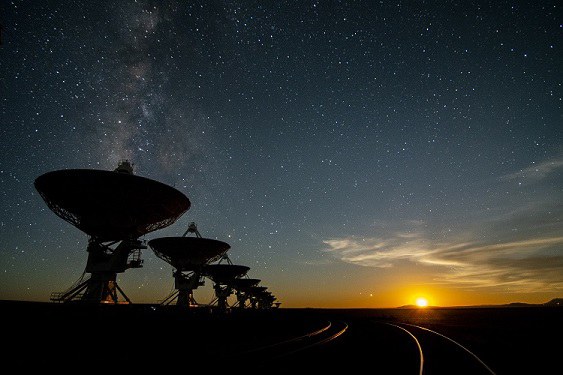
NRAO PARTNERSHIP WITH OUR TRIBAL NEIGHBORS MEETING
April 14-16, 2023
WELCOME NOTE FROM JULIA
We are excited to see you all here in Socorro NM for our first in-person gathering as an initiative. We are so very grateful for your heart and your expertise. We look forward to the bonds we will create sitting side-by-side, listening to each other.
Yahípi na líla čhaŋtéwašte-mayayape (You made me very happy by coming),
Julia Blue Bird
MEETING GOALS
- Build bonds, in person;
- Share a vision of the NSF Racial Equity in STEM Education proposal;
- Ask for your input and opinions and to share your wisdom and expertise; and
- Develop shared objectives.
WE'LL SEE YOU SOON!
In preparation for our time together, please check out the tabs on the left for additional meeting information. Please be sure to register as soon as possible and to submit the NRAO-NM Official Visitor Registration Form prior to your arrival. (See the Registration and Logistics tab for instructions on how to fill out this form.)
MEETING AGENDA
AGENDA
Friday, April 14th
6pm Dinner
Saturday, April 15th
8:30am-5pm Meeting
5:30pm Dinner
Sunday, April 16th
8:30-11:30am Breakfast/Summary
11:30am VLA Tour (*optional)
VLA Tour Note: Close-toed shoes and long pants are required attire for this tour. A jacket and hat are also strongly recommended.
Logistics & Registration
REGISTRATION
Meeting Registration (Required)
Please register to attend the meeting here. We kindly request your RSVP by March 13.
NRAO-NM Official Visitor Registration Form (Required) NOTE: Firefox is the recommended browser for submitting this form. At your earliest convenience, please follow this link to submit a visitor registration form. This form is required to visit our New Mexico site.
Instructions for filling out the Visitor Registration Form:
1. Under Register by Visitor Type select "NRAO/AUI Official Visitor"
2. For Host Name please list Lori Appel (lappel@nrao.edu)
3. Under Onsite Resources & Communications, select "No resources needed"
4. Under Local Announcement, select "No"
5. Under NRAO-Travel & Lodging, select "No, I've already arranged my travel and lodging"
6. Skip the Travel & Reimbursement section
_________________
LOGISTICS
Meeting Location
National Radio Astronomy Observatory
Pete V. Domenici Science Operations Center (DSOC)
1003 Lopezville Road
Socorro, NM 87801-0387
Phone: 1-575-835-7000
Hotel Accommodations
Best Western Socorro
1100 N California Street
Socorro, New Mexico 87801
Toll Free Central Reservations (US & Canada Only): 1 (800) 780-7234
Hotel Direct Number: (575) 838-0556
Note: All hotel rooms will be pre-paid by NRAO.
__________________
CONTACT
Questions or concerns?
Please contact Nikki Correll at ncorrell@nrao.edu.
2023 NRAO Postdoctoral Symposium
2023 NRAO/GBO Postdoctoral Symposium


The 18th Postdoctoral Science Symposium will be held on May 15 - 17, 2023 at the National Radio Astronomy Observatory in Socorro, New Mexico in a hybrid (virtual and in person) format. The annual symposium brings together the resident and non-resident Jansky fellows along with NRAO & Green Bank Observatory (GBO) postdocs in order to highlight their current research, share ideas, and establish collaborations. Local NRAO scientific and engineering staff are encouraged to attend.
We are pleased to have Dr. Elisabeth A.C. Mills, Assistant Professor at Kansas University, as our Keynote Speaker this year.
Panelists participating in our hybrid career panel session are:
- Dr. Lisa Locke (JPL)
- Dr. Elisabeth A.C. Mills (KU)
- Dr. Erin Ryan (Booz Allen Hamilton)
- Dr. Fabian Walter (MPIA)
- Dr. Lisa Winter (NSF)
Symposium
Date: May 15 - 17, 2023
Location: Domenici Science Operations Center Auditorium
National Radio Astronomy Observatory
Socorro, New Mexico
Symposium Dinner
Date: Tuesday, May 16, 2023
Location: Yo Mama's Grill
913 N California St
Socorro, NM 87801
Time: 6:30 pm
Program
Abstracts for the talks are listed here.
Talks are allocated for 20 minute each, with 15-18 min for the presentation.
All times are listed local to Socorro, NM in Mountain Daylight Time (MDT).
Monday - May 15, 2023
|
||
| 09:15--09:30 |
Welcome and Introduction |
Anna Kapinska, |
|
Session 1: Interstellar Medium | ||
|---|---|---|
| 09:30--09:50 |
High Redshift HI & H2 With CHILES |
Julia Blue Bird |
| 09:50--10:10 |
Forming Molecular Clouds in Cygnus X |
Kimberly Emig |
| 10:10--10:30 |
Zeeman effect of the HI narrow self-absorption line, a new systematic probe of magnetic field in molecular cloud |
Tao-Chung Ching |
| 10:30--11:00 |
Discussion: ISM |
|
| 11:00--11:30 |
Coffee Break |
|
| 11:30--12:30 |
Discussion: NRAO/GBO Postdoc Program |
Anna Kapinska, Tony Remijan, Ryan Lynch |
| 12:30--13:30 |
Lunch |
|
|
Session 2: Stellar Evolution | ||
| 13:30--13:50 |
Radio/Optical Maps of Planetary Nebulae to Uncover Their History |
Jesse Bublitz |
| 13:50--14:10 |
Line Dancing in Mira Atmospheres |
Dana Baylis-Aguirre |
| 14:10--14:30 |
Properties of the interstellar medium in different Galactic environments |
Michael Rugel |
| 14:30--15:00 |
Discussion: Stellar Evolution |
|
| 15:00--15:30 |
Coffee Break |
|
|
Session 3: Compact Objects | ||
| 15:30--15:50 |
Detection of relativistic effects in PSR J1952+2630 and PSR J1012-4235 |
Tasha Gautam |
| 15:50--16:10 |
Slow radio transients as signposts for discovering the unknown |
Dillon Dong |
| 16:10--16:30 |
Discussion: Compact Objects |
|
| 16:30--17:30 |
Peer Review Workshop |
Fabian Walter |
| 18:30 |
Dinner for Postdocs, Panelists, and Organizers |
Bodega Burger |
All times are listed local to Socorro, NM in Mountain Daylight Time (MDT).
Tuesday - May 16, 2023
|
||
| 09:15--09:30 |
Welcome & Announcements |
LOC |
|
Keynote Talk | ||
|---|---|---|
| 09:30--10:45 |
Hidden Engines: Uncovering the Workings of the Nearest Galaxy Centers |
Elisabeth A.C. Mills |
| 10:45--11:00 |
Coffee Break |
|
|
Session 4: Galaxies and AGN | ||
| 11:00--11:20 |
The Cosmic Dance of Andromeda & The Milky Way |
Chenoa Tremblay |
| 11:20--11:40 |
The formative and explosive physics of merging galaxy clusters |
Emily Moravec |
| 11:40--12:00 |
Multiwavelength Study of Heavily Obscured Quasars with Young Radio Jets at Cosmic Noon |
Pallavi Patil |
| 12:00--12:30 |
Discussion: Galaxies and AGN |
|
| 12:30--13:30 |
Lunch |
|
|
Career Panel | ||
| 13:30--14:15 |
Career Panel (1) |
Lisa Locke, Betsy Mills, Erin Ryan, Fabian Walter, Lisa Winter |
| 14:15--14:30 |
Group Photo and Coffee Break |
|
| 14:30--15:15 |
Career Panel (2) |
Lisa Locke, Betsy Mills, Erin Ryan, Fabian Walter, Lisa Winter |
| 15:15--15:30 |
Coffee Break |
|
|
Session 5: Instrumentation & Experiments | ||
| 15:30--15:50 |
Radio telescope's antenna design and beam pattern characterization techniques |
Bang Nhan |
| 15:50--16:10 |
An All-Sky Commensal SETI Survey with the Very Large Array |
Savin Shynu Varghese |
| 16:10--16:30 |
Early VLBI Experiments and Global Cooperation in Radio Astronomy |
Rebecca Charbonneau |
| 16:30--17:00 |
Discussion: Instrumentation & Experiments |
|
| 17:00--17:15 |
Closing Remarks |
Bang Nhan & LOC |
| 18:30 |
Symposium Dinner |
Yo Mama's Grill |
Wednesday - May 17, 2023
|
||
|
Depart Return 17/18:00 |
Site tours of the VLA & COSMIC backend and the VLBA for postdocs and panelists |
Anna Kapinska, |
Logistics
Important Dates
Abstract submission deadline: Mar 21, 2023
Registration Deadline: Apr 21, 2023
Symposium Venue
Domenici Science Operations Center (DSOC)
1003 Lopezville Rd, Socorro, NM 87801
Driving Directions:
As you enter New Mexico Tech campus from Bullock Avenue, continue on to Olive Lane. Make the first right into the parking lot and then another immediate right into the DSOC lot. The DSOC is on the north end of the parking lot.
If you arrive after 10:00 PM, the gate at the corner of Lopezville Road and Olive Lane (Bullock becomes Olive Lane) will be locked, return to Leroy Street and turn right. Continue to Neel Ave, turn right. Neel Ave will become Olive Lane. Continue on Olive Lane, the Macey Center screened-display will be in view as you drive around the curve. Turn left into the parking lot marked with the Domenici Science Operations Center sign. The DSOC is on the north end of the parking lot.
Maps and directions to NRAO Socorro from the Albuquerque airport (ABQ) are located here.
Lodging
For participants who have not booked and paid for their own lodging, lodging will be sponsored by NRAO at the NRAO Guesthouse. Symposium participants who submitted the lodging request for the Guesthouse should have received a confirmation by email with details and instructions on how to access the Guesthouse during or after business hours listed in. The email should have a subject line of "Your Upcoming Trip - NRAO NM".
If you have any question regarding to your booking, please contact the DSOC reservationist can be reached at nmreserv@nrao.edu or by phone at 575-835-7000
Computing Access
Guest wifi will be available at DSOC, not at the telescope sites.
Meal Arrangements
Breakfast and lunch will be provided on Monday and Tuesday to in-person participants.
A welcome dinner for postdocs, panelists, and organizers will be held on Monday, May 15th at 6:30pm at Bodega Burger.
The Symposium Dinner will be held on Tuesday, May 16th at 6:30pm at Yo Mama's Grill.
During the VLA+VLBA site tour for postdocs, panelists, and organizers on Wednesday, May 17th, we will stop for lunch at a local restaurant between the VLA and VLBA sites.
There are plenty of options to eat in Socorro. Most restaurants are within walking distance from the NMT Campus, where the conference will take place, and the hotels. More information on dining options may be found here: https://www.socorronm.org/dining/
VLA Site Tour: Logistics and RFI concerns
On Wednesday, May 17th, a VLA & VLBA site tour has been organized for the postdocs and career panelists. NRAO will provide transportation to/from DSOC and the VLA & VLBA sites. We will leave at 8am. This will likely take up the entire day, expecting to be back at DSOC around 5 or 6pm. If you need to leave early, please arrange your own transportation to the site.
Since the site is at a high elevation (~6,970 feet or ~ 2,120 m), please let the OC know if you have any health concerns. Closed-toed shoes and long pants are required during the tour. We strongly suggest you also bring the following items: water, sunscreen, lip-blam, and sunhats. It is expected to be windy at the site. It will be possible to climb into one of the VLA dishes, but that is optional.
- Digital cameras are not permitted near the telescopes
- Please take RFI precautions and protocols as instructed by the organizers
- If you have any question, please ask one of your local NRAO guides.
New Mexico Tourist Attractions
With its rich heritage, breathtaking landscapes, adventurous spirit, and great food and arts scene, New Mexico has many unique experiences to offer. Here are some of the must-see tourist attractions within driving distance from Socorro.
- White Sands National Park (~ 3 hours drive)
- Carlsbad Caverns (~ 4.5 hours drive)
- Santa Fe (~ 2 hours drive)
- Taos (~ 3 hours drive)
Interior Border Control Check Point Notes: There is at least one interior border control check point on I-25 north bound section south of Socorro, please check online for appropriate paperwork needed and your rights when passing through those check points.
Emergency Contact
For safety concerns, contact local and/or New Mexico Tech police at the following numbers:
- Emergency 911
- Non-emergency 575-835-5434 or ext. 5434 (using the outside phone)
Participants
The following is the complete list of registered participants, including postdocs, invited speakers, organizers, and registered local scientific staff:
- Lori Appel (NRAO-NM)
- Dana Baylis-Aguirre (NMT)
- Pedro Beaklini (NRAO-NM)
- Loreto Barcos-Munoz (NRAO-CV)
- Sanjay Bhatnagar (NRAO-NM)
- Julia Blue Bird (NRAO-NM)
- Jesse Bublitz (GBO)
- Tierra Candelaria (NMT)
- Rebecca Charbonneau (NRAO-CV)
- Tao-Chung Ching (NRAO-NM)
- Barry Clark (NRAO-NM)
- Paul Demorest (NRAO-NM)
- Vivek Dhawan (NRAO-NM)
- Dillon Dong (NRAO-NM)
- Kimberly Emig (NRAO-CV)
- Tasha Gautam (NRAO-CV)
- Miller Goss (NRAO-NM)
- Eric W Greisen (NRAO-NM)
- Suzy Gurton (NRAO-CV)
- Preshanth Jagannathan (NRAO-NM)
- Anna Kapinska (NRAO-NM)
- Brian Kent (NRAO-CV)
- Devaky Kunneriath (NRAO-CV)
- Justin Linford (NRAO-CV)
- Lisa Locke (JPL)
- Ryan Lynch (GBO)
- Steven Myers (NRAO-NM)
- Elisabeth A.C. Mills (KU)
- Robert Minchin (NRAO-NM)
- Emily Moravec (GBO)
- Arielle Moullet (NRAO-CV)
- Bang Nhan (NRAO-CV)
- Viral Parekh (NRAO-NM)
- Pallavi Patil (NRAO-NM)
- Rick Perley (NRAO-NM)
- George Privon (NRAO-CV)
- Tatiana M. Rodriguez (NMT)
- Michael Rugel (NRAO-NM / CfA)
- Dary Alexandra Ruiz (NRAO-CV)
- Erin Ryan (Booz Allen Hamilton)
- Frank Schinzel (NRAO-NM)
- Patrick Sheehan (NRAO-CV)
- Lorant Sjouwerman (NRAO-NM)
- Brian Svoboda (NRAO-NM)
- Chenoa Tremblay (NRAO-NM / SETI Institute)
- Lilia Tremou (NRAO-NM)
- Savin Shynu Varghese (NRAO-NM)
- Catherine Vlahakis (NRAO-CV)
- Fabian Walter (MPIA)
- Lisa Winter (NSF)
- Al Wootten (NRAO-CV)
- Ilsang Yoon (NRAO-CV)
Organizing Committee
- Kimberly Emig (Jansky Fellow, Co-chair, NRAO-CV)
- Bang Nhan (Jansky Fellow, Co-chair, NRAO-CV)
- Pallavi Patil (Jansky Fellow, NRAO-NM)
- Jesse Bublitz (Postdoc Fellow, GBO)
- Tao-Chung Ching (Jansky Fellow, NRAO-NM)
- Anna Kapinska (Jansky Coordinator, NRAO-NM)
- Jessica Burns (Administrative Support, NRAO-CV)
- Lori Appel (Administrative Support, NRAO-NM)
main_photo_folder
242nd American Astronomical Society Meeting
Radio Astronomy at AAS242 in Albuquerque, New Mexico
242nd American Astronomical Meeting
Albuquerque Convention Center | Albuquerque , New Mexico | 4 - 8 June 2023
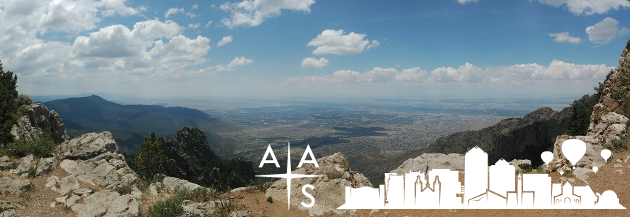
The following sessions and opportunities at the summer June 2023 American Astronomical Society (AAS 242) meeting in Albuquerque will showcase the scientific range and impact of radio astronomy facilities in New Mexico.
The meeting program for the conference is available.
Special Tour A special behind-the-scenes tour of the Karl G. Jansky Very Large Array (VLA) will occur on Sunday, 4 June.
Special Session: Radio Astronomy in New Mexico Monday, June 5. 2:00pm to 3:30pm MDT in Meeting Room 230 and 5:30pm to 6:30pm MDT in Exhibit Hall 3. The University of New Mexico is organizing "Radio Astronomy in New Mexico" to highlight radio astronomy performed with facilities based in New Mexico.
Splinter Session: An Explorer's Guide to the VLA Sky Survey Tuesday, June 6. 9:00am to 3:00pm MDT. Meeting rooms 15/16/32. "An Explorer's Guide to the VLA Sky Survey (VLASS)" will showcase the survey, science highlights, and data products. Users will be guided through data access and tools with focus on using new single-epoch continuum images and cubes for polarimetry.
Splinter Session: The Next-Generation VLA: Update and Community Forum Tuesday, June 6. 2:00pm to 3:30pm MDT. Meeting room 230. ngVLA community leaders are organizing "The Next-Generation VLA: Update and Community Forum," a working meeting that will describe and discuss ngVLA science and the development of a transition from the VLA and VLBA to ngVLA.
NRAO Town Hall Tuesday, June 6. 6:30pm to 8:30pm MDT. Ballroom A. An evening NRAO Town Hall will inform AAS attendees about the status of science, science operations, and exciting development programs at the National Radio Astronomy Observatory (NRAO).
Visit the NRAO Exhibit during the conference to pick up some giveaways and learn about opportunities and programs like the Wideband Sensitivity Upgrade for ALMA.
See the meeting website for conference details.
15th DiFX Users and Developers Meeting
15th DiFX Users and Developers Meeting

The 15th DiFX Users and Developers meeting will be held at the Pete V. Domenici Science Operations Center (DSOC) in Socorro, NM, USA from September 11 to 15, 2023. The meeting will include two components. The first two days will be the DiFX Users meeting, which will be composed of talks, posters, and discussions. This first portion of the meeting will also include a tutorial on running DiFX. The first two days will be in a hybrid in-person/virtual format. The last three days will be the DiFX Developers workshop, which will consist of future planning, improvements, and documentation. The final three days will be mostly limited to in-person participation, with possible exceptions to accommodate specific interactions.
Important Dates
May 05, 2023: Registration Opens
August 28, 2023: Registration Closes
September 04, 2023: Last day to submit NRAO Visitor Request
September 11, 2023: First day of the meeting
September 15, 2023: VLBA Pie Town Tour, final day of the meeting
Local Organizing Committee
Walter Brisken
Jay Blanchard
Justin Linford
Steven Tremblay
Scientific Organizing Committee
Adam Deller
Helge Rottmann
Shaoguang Guo
Program
September 11 & 12
DiFX Users Meeting (In-person/Virtual Hybrid)
DiFX Users Meeting Day 1 (Monday)
Session 1: Welcome and Introductions
08:40 - 09:00 Arrival, registration, etc.
09:00 - 09:10 Welcome
09:10 - 09:30 Introductions
09:30 - 10:00 Intro to DiFX [Deller]
10:00 - 10:15 DiFX @ NRAO [Brisken]
10:15 - 10:30 DiFX @ ATNF [Reynolds]
Morning tea/coffee
10:30 - 11:00
Session 2: Site activities
11:00 - 11:15 Updates of the Korean VLBI Network and DiFX Correlation [Kim]
11:15 - 11:30 Tsukuba Correlator [Ueshiba - virtual]
11:30 - 11:45 DiFX @ MPIfR [Rottmann]
11:45 - 12:00 Two Approaches to High Throughput Correlations for ngEHT and wSMA [Wei Yu]
12:00 - 12:15 VLBI Capabilities At The NASA's Deep Space Network [Mauger]
12:15 - 12:25 Any other site users can give a 1 slide overview of their use cases
LOC Announcements
12:25 - 12:30
Lunch
12:30 - 13:30
Session 3: Geodesy
13:30 - 14:00 VGOS correlation/simulation in Vienna [Gruber]
14:00 - 14:30 HOPS4 Development [Barrett]
14:30 - 15:00 Correlating VLBI data from the High Rate Tracking Receiver (HRTR) [Skeens]
15:00 - 15:30 Discussion on DiFX needs for geodesy
Afternoon tea/coffee & workshop photo!
15:30 - 16:00
Session 4: DiFX for connected element interferometry
16:00 - 16:30 DiFX for VLITE [Peters - virtual]
16:30 - 16:50 DiFX for ASKAP FRB localization [Deller]
16:50 - 17:10 DiFX for ngVLA [Yeste Ojeda - virtual]
17:10 - 17:30 Discussion on DiFX wishes for connected element interferometry
No-Host Dinner (attendees are responsible for the cost of their meal)
19:00 - 20:30 Bodega Burger
DiFX Users Meeting Day 2 (Tuesday)
Session 1: DiFX upgrades
09:00 - 09:20 DiFX for transients [Liu]
09:20 - 09:35 GPU-DiFX [Deller]
09:35 - 09:55 RADIOBLOCKS @JIVE [Kettenis - virtual]
09:55 - 10:10 Discussion: Deprecating Mark 5 in future versions
10:10 - 10:30 Discussion: User wish list for DiFX future upgrades
Morning tea/coffee
10:30 -11:00
Session 2: Benchmarks, testing, and versions
11:00 - 11:20 Discussion: Moving from DiFX-2.8.1 to 2.8.2
11:20 - 11:40 Benchmarking DiFX [Dutka]
11:40 - 12:00 Simulation VDIF data with VDIFSim [Brisken]
12:00 - 12:15 Running DiFX under SLURM - be good to the climate (and your budget) [Rottmann]
12:15 - 12:30 Discussion: User wish list for benchmarks and testing
Lunch
12:30 - 13:30
Session 3: DSOC Tours
13:30 - 14:30 Correlator and lab tours (two groups)
14:30 - 15:30 DiFX demo (time permitting)
Afternoon tea/coffee
15:30 - 16:00
Session 4: Code hosting and continuous integration
16:00 - 16:30 The status of the SVN to git migration [Guo - virtual]
16:30 - 16:45 Possibilities for revitalizing continuous integration [Deller]
16:45 - 17:30 Discussion: Future code hosting plans
September 13-15
DiFX Developers Workshop (In-person)
DiFX Developers Workshop Day 1 (Wednesday)
Topics to cover:
- Doc-a-thon session
- Versions & long-term plans
- To-do list
12:00 - 13:00 Wednesday Pizza Lunch informal talks
- Wael Farah, "Refurbishment of the Allen Telescope Array"
- Adam Deller, "Putting Fast Radio Bursts under the microscope with ASKAP"
DiFX Developers Workshop Day 2 (Thursday)
Topics to cover
- Code hosting
DiFX Developers Workshop Day 3 (Friday)
VLBA Pie Town Tour
Workshop wrap-up
Venue and Lodging
Venue
 The 15th DiFX Users and Developers meeting will be held at the Pete V. Domenici Science Operations Center (DSOC) in Socorro, NM. For information on how to get to the DSOC, please see the NRAO Socorro Directions and Maps page.
The 15th DiFX Users and Developers meeting will be held at the Pete V. Domenici Science Operations Center (DSOC) in Socorro, NM. For information on how to get to the DSOC, please see the NRAO Socorro Directions and Maps page.
Lodging
 In-person participants have the option to stay at the NRAO Guest House for the duration of the meeting. The Guest house is within easy walking distance of the DSOC (see the NMT Campus map) and has a kitchen and laundry facilities. Guest House reservations can be made when submitting an NRAO Visitor Registration.
In-person participants have the option to stay at the NRAO Guest House for the duration of the meeting. The Guest house is within easy walking distance of the DSOC (see the NMT Campus map) and has a kitchen and laundry facilities. Guest House reservations can be made when submitting an NRAO Visitor Registration.
For more information on the NRAO Guest House, see the Staying in Socorro page.
Participants who do not wish to stay at the Guest House are welcome to make their own lodging arrangements for any hotel of their choice. However, the organizers have not reserved rooms at any of the local hotels and no special rates have been negotiated.
NRAO Visitor Registration
All visitors to the DSOC must complete the NRAO Visitor Registration.
For those attending the 15th DiFX Users and Developers Meeting, please select "NRAO/AUI Official Visitor". Provide all the required information. In the "Purpose of Visit" section, you can enter any of the LOC members as the "NRAO-NM Host". LOC information is provided below.
For those interested in staying at the NRAO Guest House, be sure to provide the necessary details in the "Travel and Lodging" section.
All in-person meeting participants must complete the NRAO Visitor Registration by September 04, 2023.
LOC members:
| Name | email (@nrao.edu) |
| Walter Brisken | wbrisken |
| Jay Blanchard | jblancha |
| Justin Linford | jlinford |
| Steven Tremblay | strembla |
Participants
The following is a list of the registered participants and their affiliation:
In-person attendees
- John Barrett (MIT Haystack)
- Jay Blanchard (NRAO)
- Walter Brisken (NRAO)
- Geoff Crew (MIT Haystack Observatory)
- Adam Deller (Swinburne University of Technology)
- Paul Demorest (NRAO)
- Michael Dutka (USNO)
- Adriana Escobar (NRAO)
- Wael Farah (SETI Institute)
- Heman Gharibnejad (USNO)
- Eric Greisen (NRAO)
- Jakob Gruber (BEV)
- Andrew Hoffmaster (USNO)
- Lucas Hunt (NRAO)
- Jongsoo Kim (Korea Astronomy and Space Science Institute)
- Peter Kotze (NRAO)
- Justin Linford (NRAO)
- Lei Liu (Shanghai Astronomical Observatory)
- Lisa Mauger (JPL)
- Emmanuel Momjian (NRAO)
- Jim Ogle (NRAO)
- Cormac Reynolds (CSIRO)
- Helge Rottman (MPIfR)
- Frank Schinzel (NRAO)
- Joe Skeens (UT-Austin)
- Anthony Sowinski (NRAO)
- Chenoa Tremblay (SETI Institute)
- Steven Tremblay (NRAO)
- Lilia Tremou (NRAO)
- Catarina Ubach (NRAO)
- Mark Wainright (NRAO)
- Montana Williams (NMT/NRAO)
- Wei Yu (CfA)
- Yun Yu (Shanghai Astronomical Observatory)
Virtual attendees
- Salama Al-Ali (SAASST)
- Anoud Alzaabi (SAASST)
- Simone Bernhart (Reichert GmbH, BKG, MPIfR)
- Zhong Chen (Shanghai Astronomical Observatory)
- Yoon Kyung Choi (Reichert GmbH, BKG, MPIfR)
- Shaoguang Guo (Shanghai Astronomical Observatory)
- Sara Hardin (USNO)
- Fanie van den Heever (SARAO)
- Pengfei Jiang (Xinjiang Astronomical Observatory)
- Wu Jiang (SHAO)
- Mark Kettenis (JIVE)
- GuangHui Li (Urumqi, CAS)
- Marisa Nickola (SARAO/HartRAO)
- Arzoo Noorani (Sharjah Academy for Astronomy Space Sciences and Technology)
- Omar Yeste Ojeda (NRAO)
- Wendy Peters (NRL)
- Violet Pfeiffer (MIT Haystack)
- Jack Radcliffe (University of Pretoria)
- Venkatessh Ramakrishnan (Finnish Centre for Astronomy with ESO)
- Pedro Salas (Green Bank Observatory)
- Matthew Schiller (NRAO)
- Matteo Stagni (INAF)
- Haruka Ueshiba (Geospatial Information Authority of Japan)
- Jan Wagner (MPIfR)
- Jun Yang (Onsala Space Observatory)
- Weimin Zheng (Shanghai Astronomical Observatory)
Code of Conduct
All meeting participants, both in-person and virtual, are expected to behave professionally and to treat all other participants, all NRAO staff, and other visitors with courtesy and respect.
NRAO Code of Conduct
The National Radio Astronomy Observatory is committed to providing a safe and welcoming environment and has adopted a Code of Conduct that includes prohibitions against discrimination and harassment of any kind, including sexual harassment.
Please review the full NRAO Code of Conduct prior to attending the meeting.
Any participant who feels that they have been made to feel unwelcome, or have been threatened, please report the incident to a member of the organizing committee (on site, contact information below), or to hr@nrao.edu.
LOC members:
| Name | email (@nrao.edu) |
| Walter Brisken | wbrisken |
| Jay Blanchard | jblancha |
| Justin Linford | jlinford |
| Steven Tremblay | strembla |





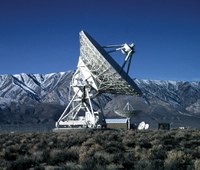
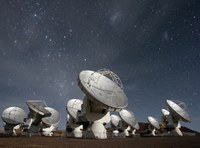
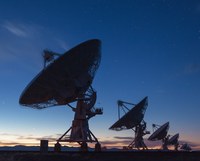
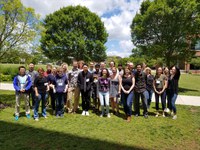
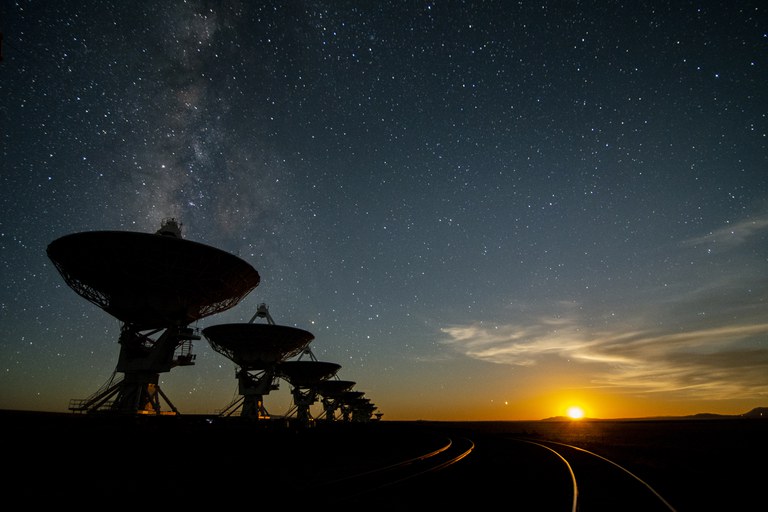
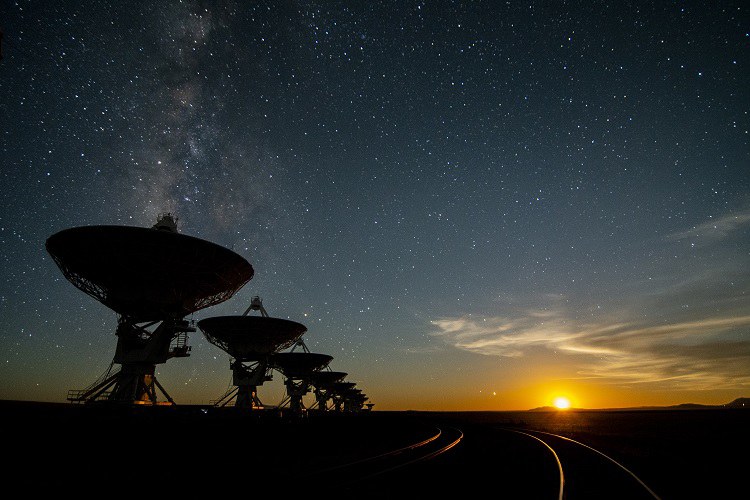
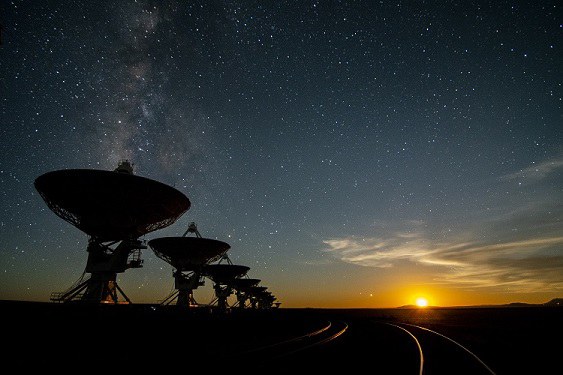
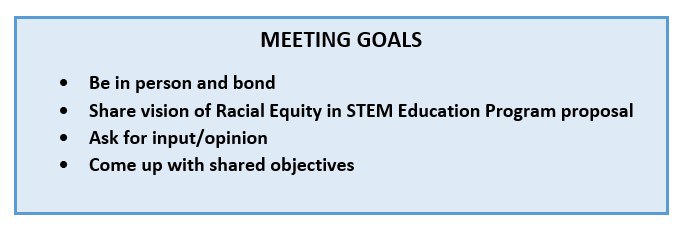
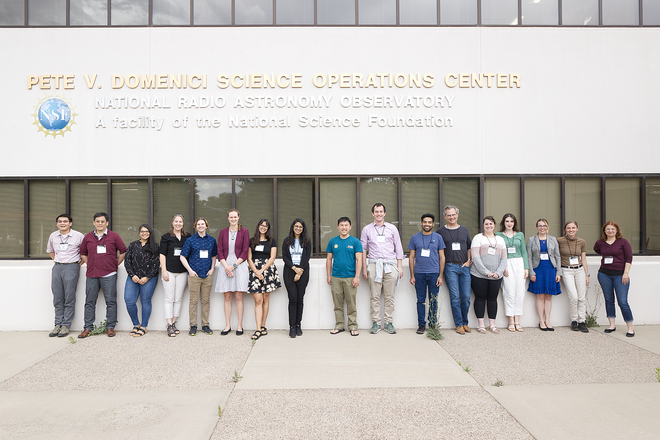
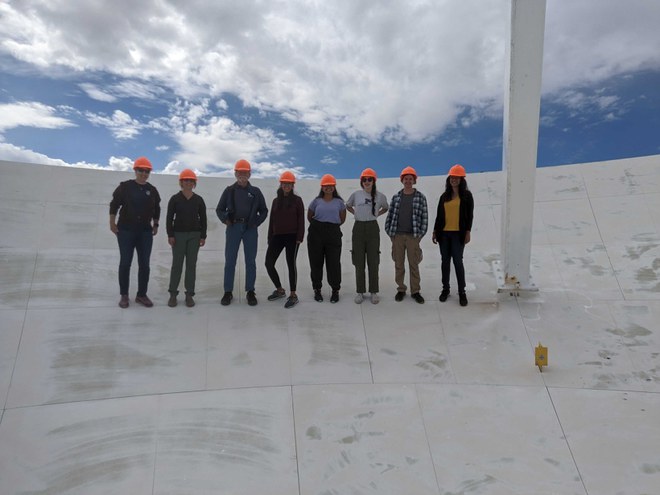
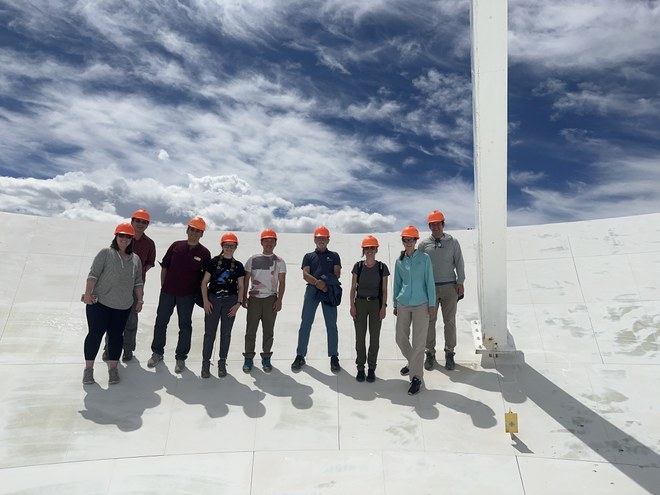
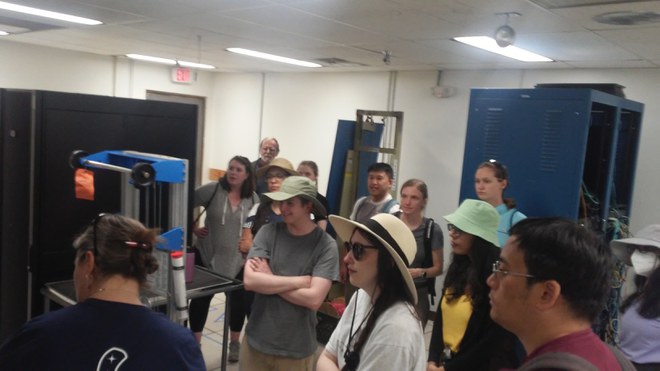
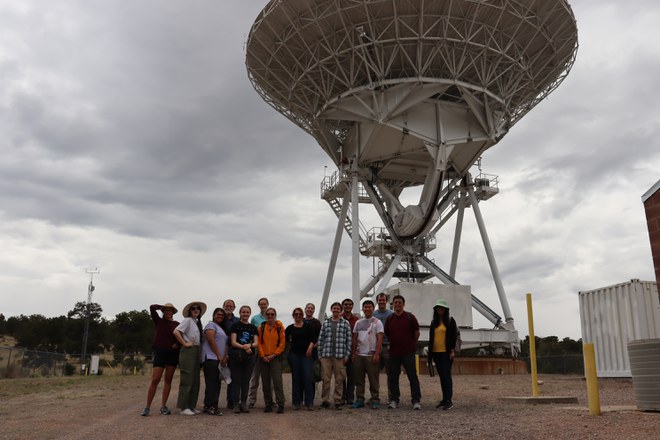
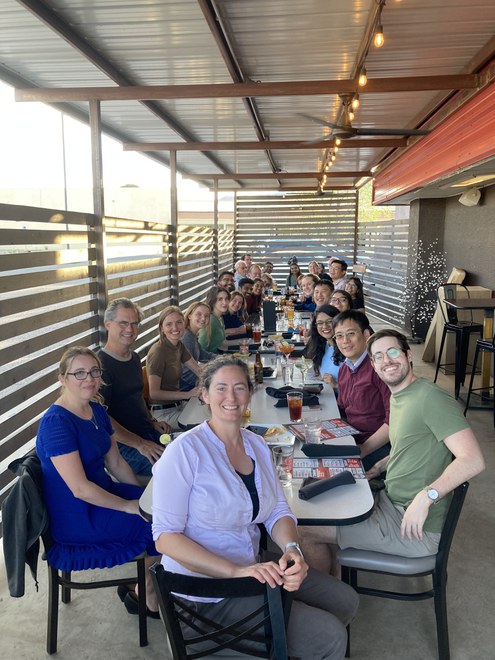
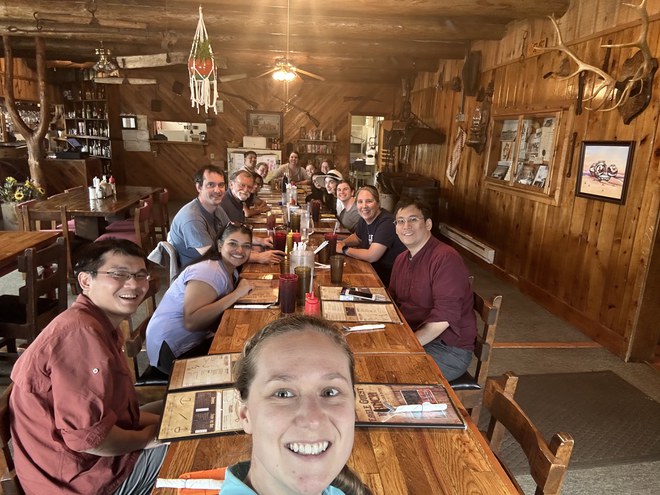
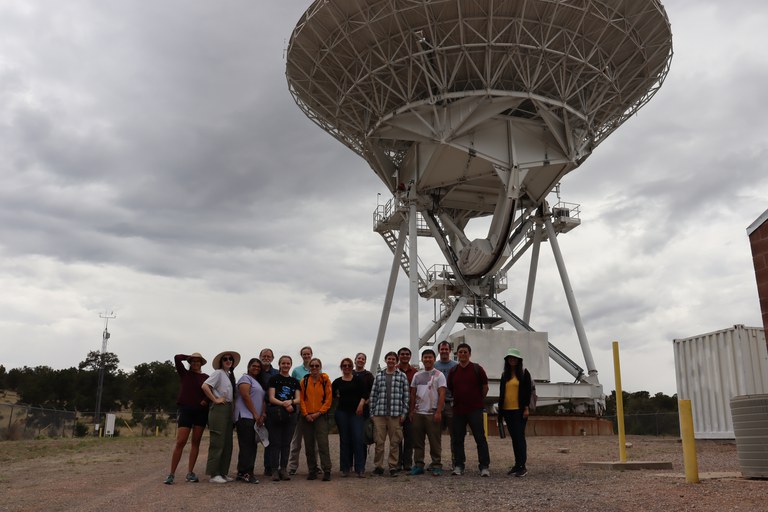
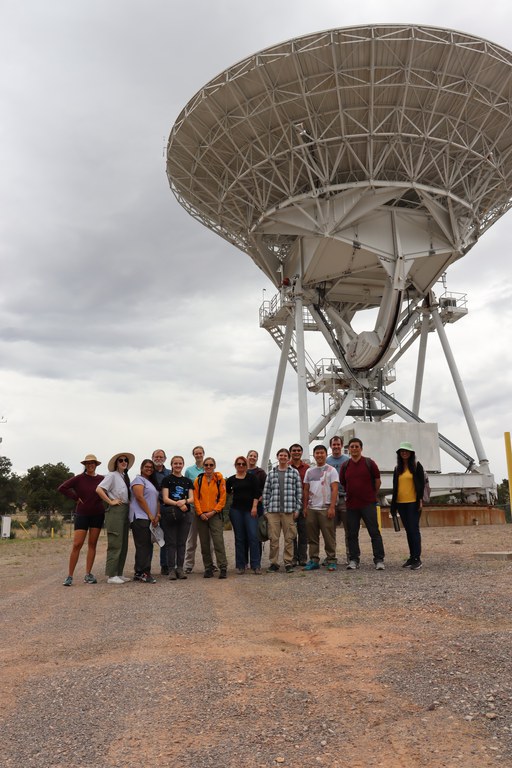
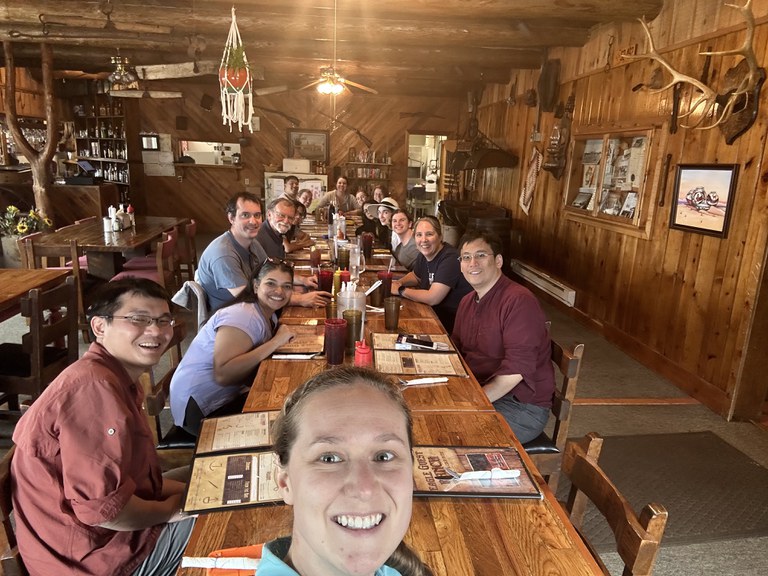
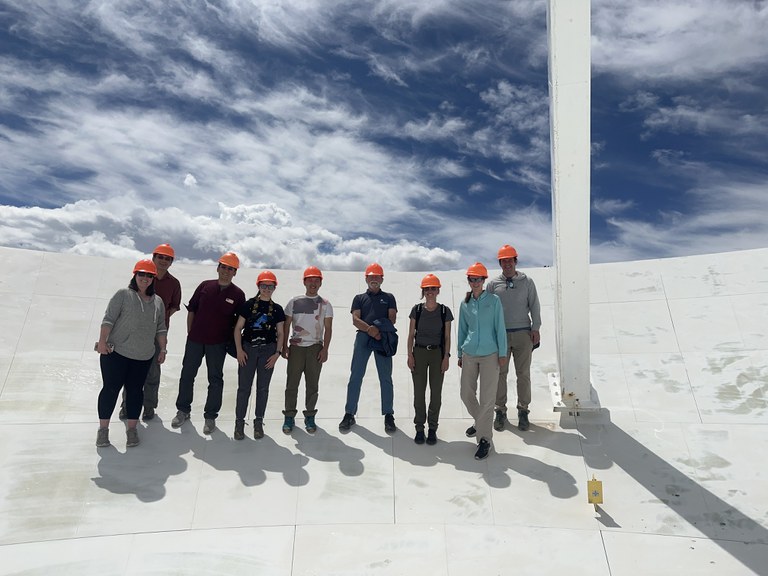
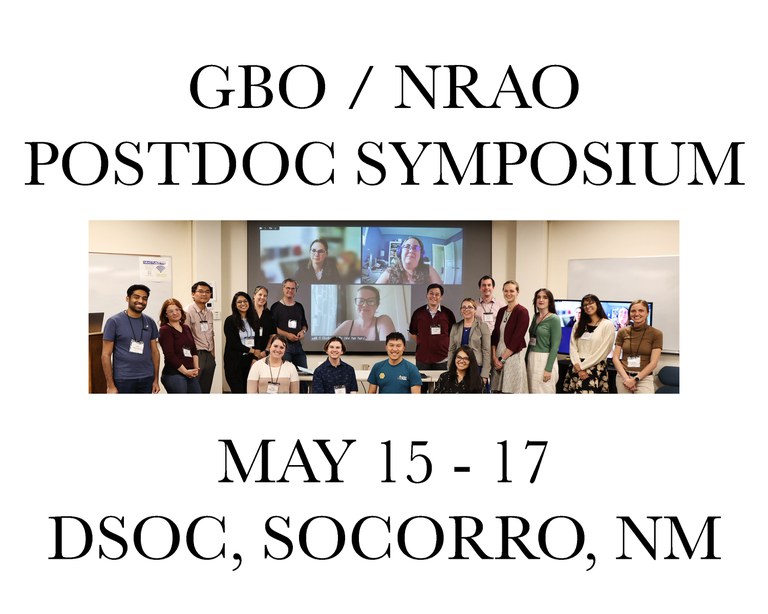
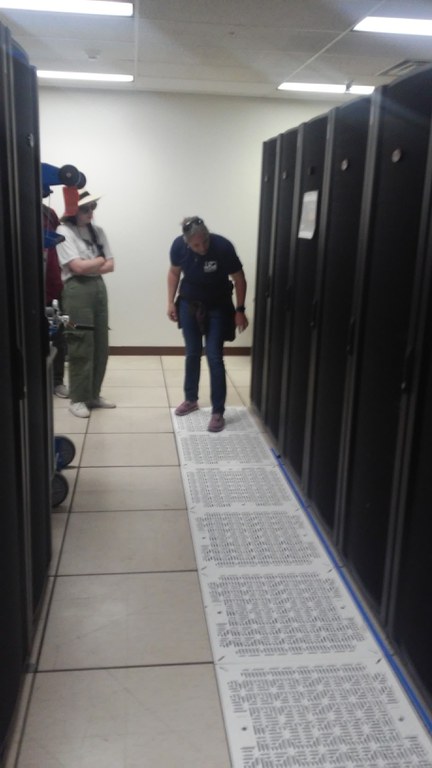
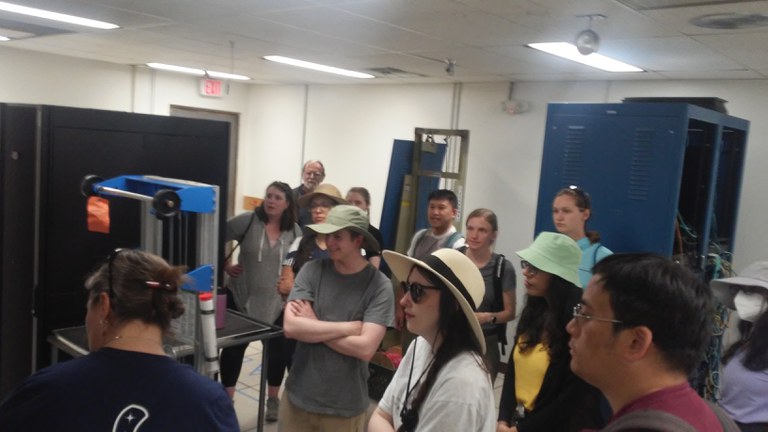
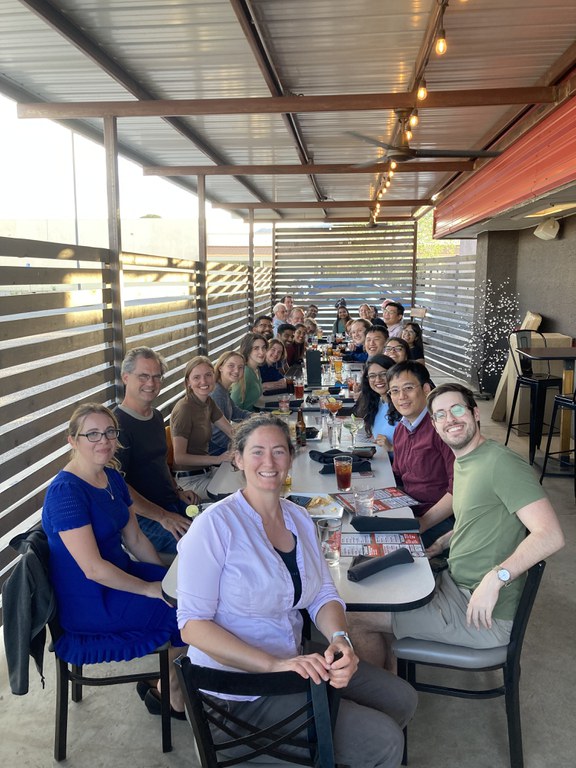
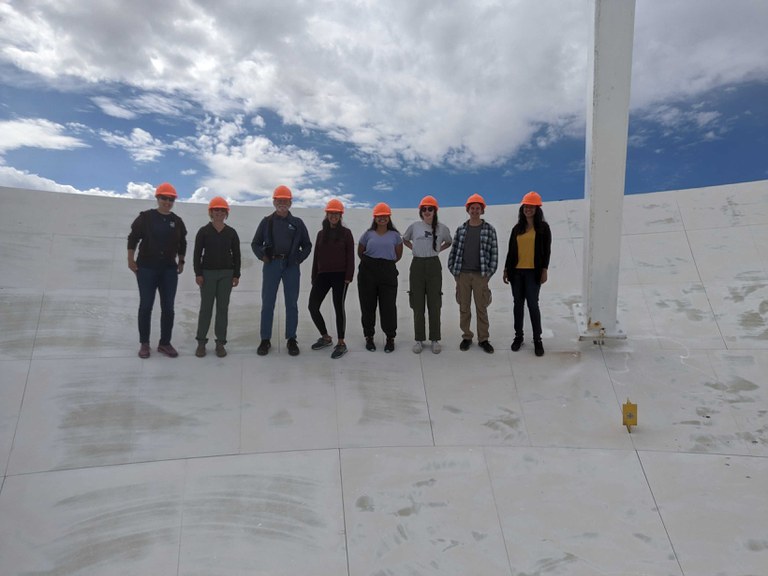
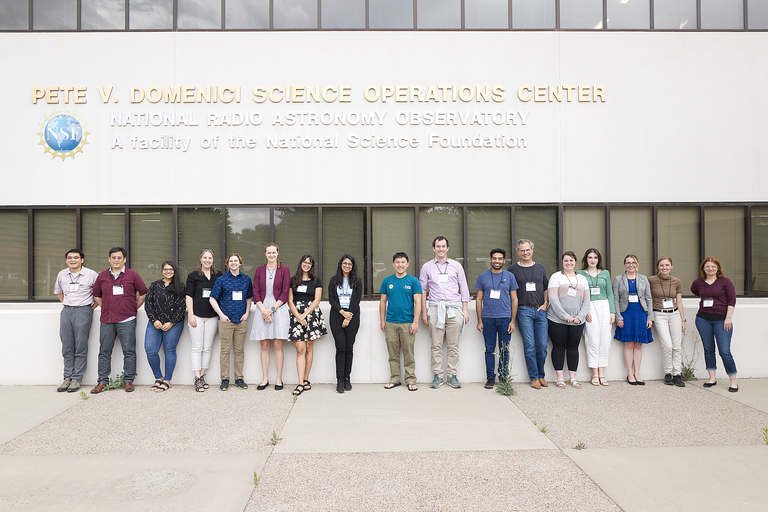


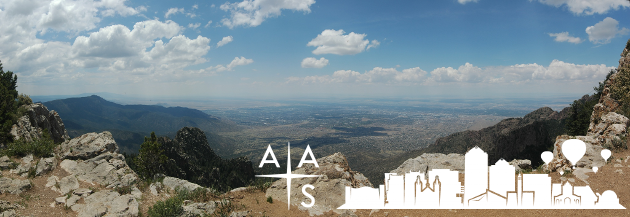
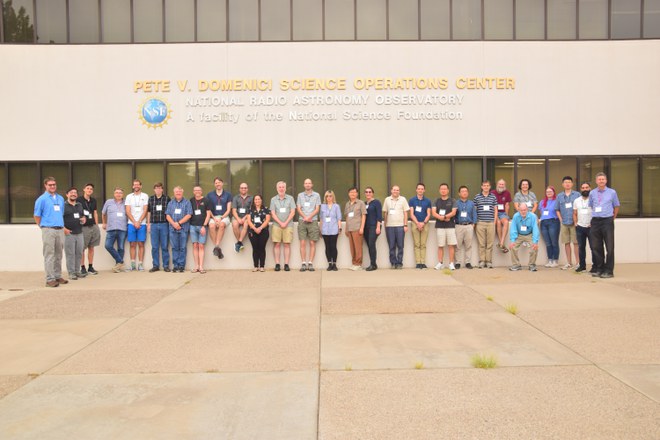
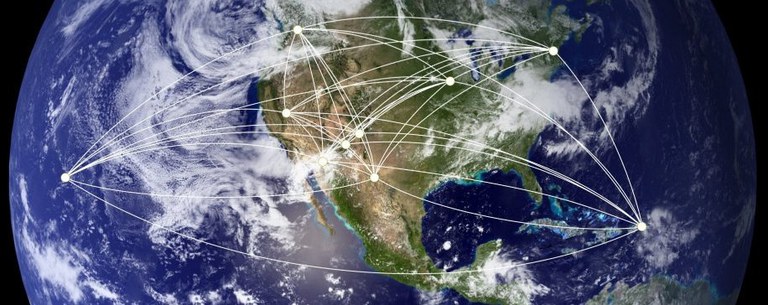


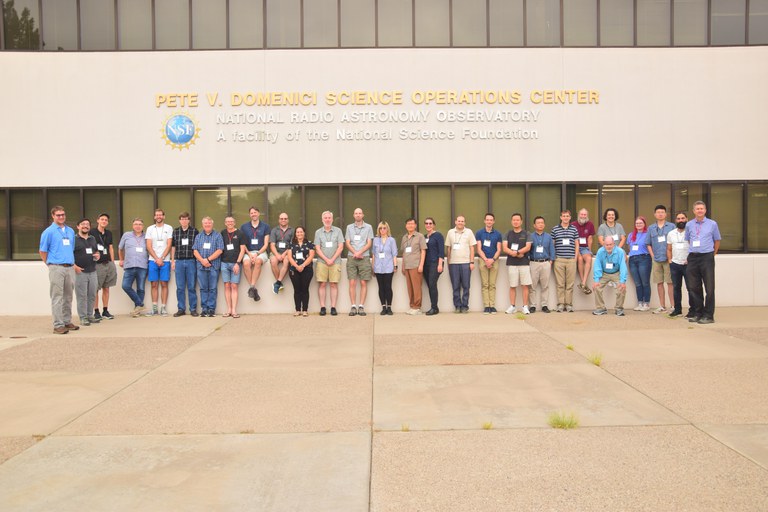
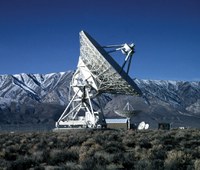
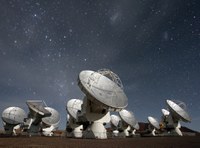
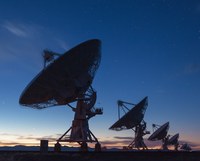
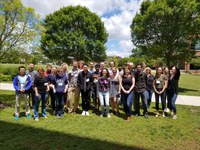



Connect with NRAO